Types of Bluebell Flowers (Bluebell Varieties)
If there is one flower that is recognized all over the world it is the bluebell. While there are different varieties of bluebells, they all have in common the bell like shape and delicate fragrance.
In addition, these flowers may look delicate, but they are actually quite hardy since they can be found in all different types of areas including woodlands, fields, meadows, churchyards and gardens.
If you are considering planting bluebell flowers in your garden, the type of bluebell you choose will depend on your own personal taste and the hardiness zone in which you live.
Here is a look at the different types of bluebells you can choose from.
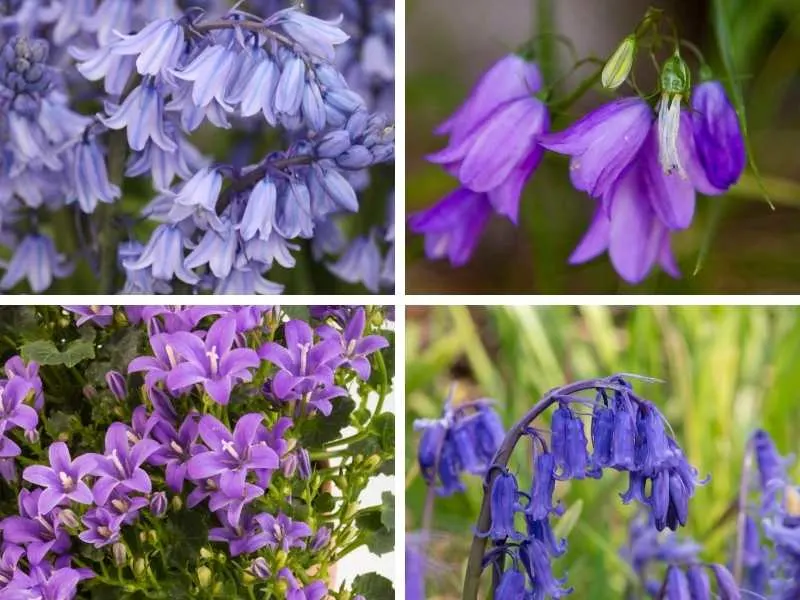
Related Article:
7 Different Types of Bluebells
#1. Common Bluebells
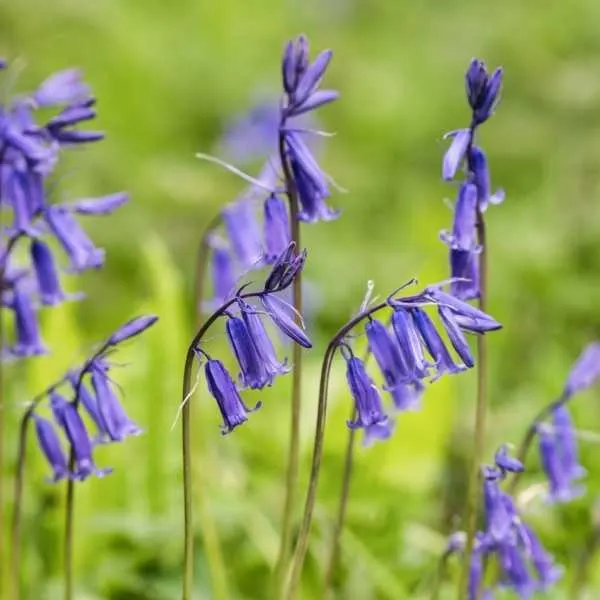
The botanical name for the bluebell is Hyacinthoides Non-Scripta. The common bluebell’s natural habitat is in the wild, normally growing at the edge of woodlands. But it works well in informal gardens or wooded plots of land.
Native to Europe the common bluebell grows best in zones 4 through 9 and prefers shady areas and all types of soil.
A single plant can have millions of bulbs and the flowers grow on a thin arched stem and are normally blue-violet in color. These flowers normally grow to be about 12 inches and are toxic to humans and pets.
#2. Scottish Bluebells
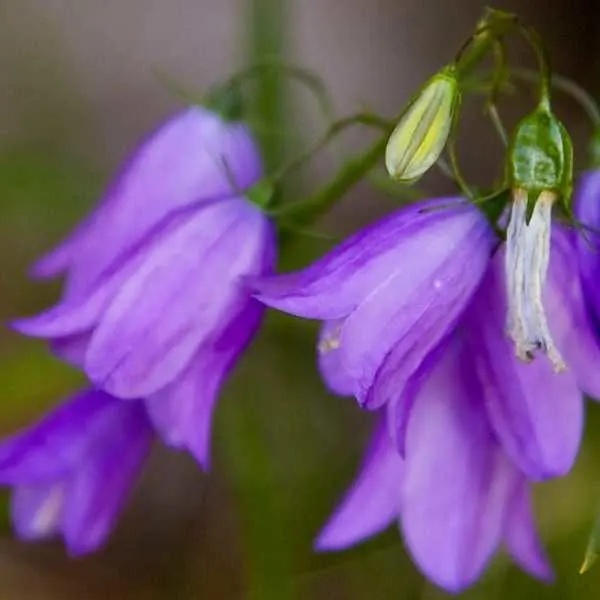
Scottish bluebells have also earned the name “Harebells” due to the fact that these flowers commonly grow in meadows frequented by hares.
The Scottish bluebells have blue or blue-violet flowers about ¾ of an inch long with both straight and rounded leaves. These flowers tend to bloom from early summer through late fall. These flowers are about 12 inches tall.
These bluebells grow best in zones 2-9 and prefer full sun, but will grow well in partial shade. They grow well in various types of soils as long as there is good drainage.
#3. English Bluebells
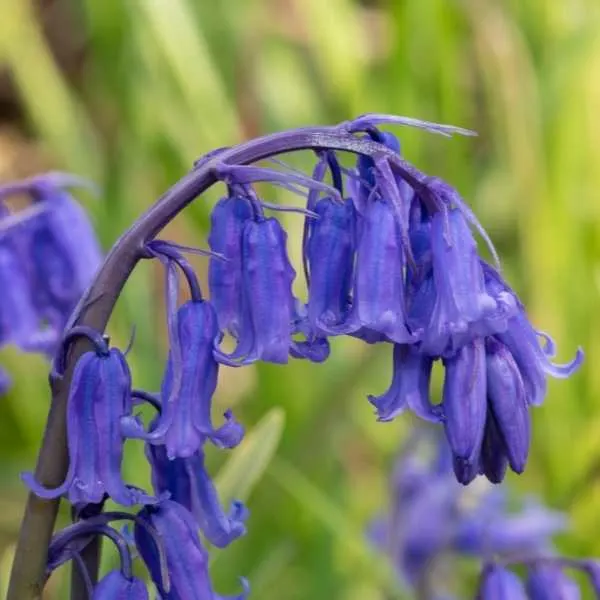
The bluish-purple flowers of the English bluebells have been growing in France and Great Britain since the 16th century.
These bell shaped flowers have straight sides with curled up tips that grow on one side of the stem of this plant with the flower blooming in the spring.
The English bluebell grows best in zones 4 through 9 and prefers partial sun and loamy, sandy or clay soil. Like most varieties of bluebells the English bluebell is toxic to humans and pets.
#4. Virginia Bluebell
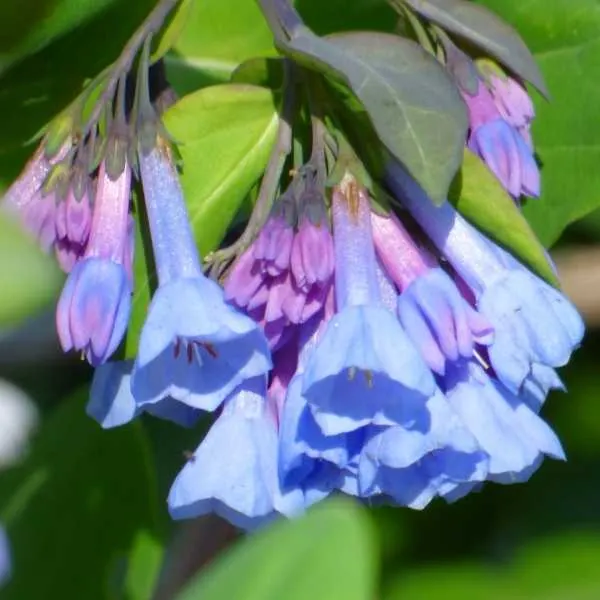
Native to Eastern North America, the Virginia Bluebell is related to Forget-Me-Nots. The flowers of this plant have pale pink buds and bloom into a pretty sky blue flowers with gray/green leaves. The flowers grow in tight bell shaped clusters that bloom in mid-spring.
This flower grows best in zones 3 to 8 and in partial to shade, but enjoys the morning sun and rich moist well-drained soil. At maturity this flower stands between 18 and 24 inches tall.
#5. Spanish Bluebell
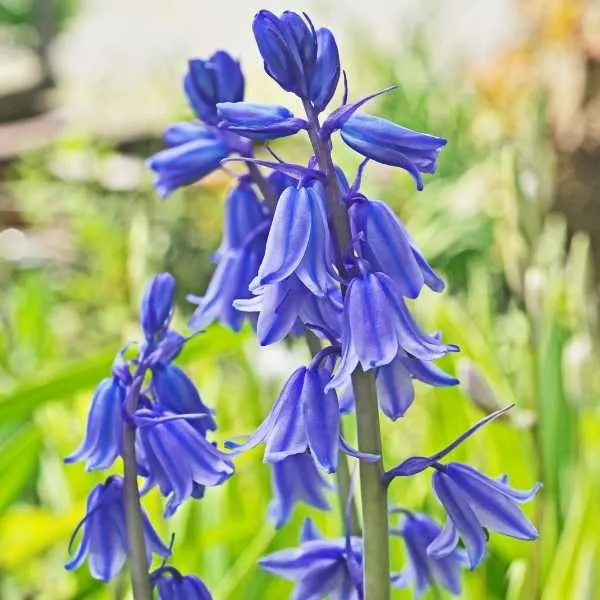
Spanish Bluebells is late spring blooming flowers that are native to Europe, specifically the Iberian Peninsula.
These flowers rarely grow in wooded areas since they much prefer open areas with full or partial sun and moist well-drained soil in which to grow. The flower heads of the Spanish bluebell form in clusters pointing upwards.
These bluebells not only come in a blue color, but also in pink and white. These flowers grow to be up to 3 feet tall and grow best in zones 3 through 8. They are toxic to humans and pets.
#6. Hybrid Bluebells
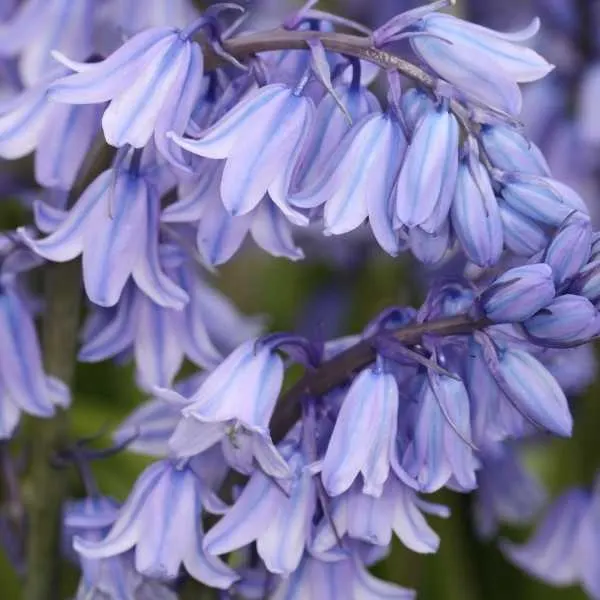
A hybrid bluebell is a cross between the common and Spanish bluebells with more of the traits being closer to the Spanish bluebell.
These flowers have a different size and shape than either the Spanish or Common bluebell. They have broad leaves with the flower heads drooping over the entire stem and a light fragrance.
Hybrid bluebells grow best in zones 3 through 9 and love partial sun and well-drained soil.
#7. Campanula
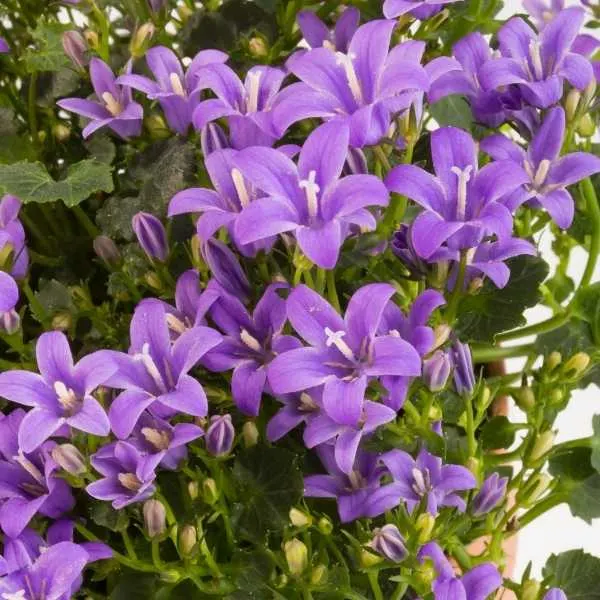
The name Campanula actually means “Little bell” in Latin. Often referred to as bluebells these flowers actually consist of over 500 species of flowering plants. While some are bell shaped other are star shaped, tubular, or shaped like a cup and saucer.
These flowers are extremely hardy and easy to grow in various climates and conditions. They consist of 5 lobed petals that grow in clusters at the end of thin stems and come in colors blue, white, pink and purple.
Campanula bluebells grow best in zones 4 through 9 and prefer partial shade and well-drained soil.
Final Thoughts on the Different Types of Bluebells
Bluebells are hardy delicate looking flowers that can be grown almost anywhere under almost any conditions. These spring blooming flowers look just as great in the garden as they do in a field or the woodlands.

